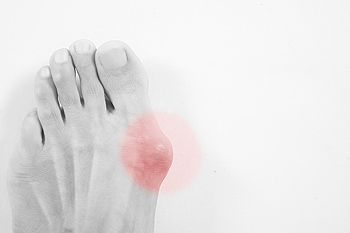 Many people who enjoy the sport of running are aware of the importance of having a strong lower body. Additionally, when proper running shoes are worn, it may be possible to prevent foot conditions that can include bunions. This is considered to be a deformity, and may hinder running enjoyment and performance. It can occur as a result of wearing shoes that do not fit correctly, and have inadequate room for the toes to move freely in. This may cause the big toe to move toward the other toes, and the bone may protrude on the side of the big toe. This can lead to pain and discomfort, and larger shoes may need to be worn that can accommodate the bunion. If you have developed a bunion, it is strongly suggested that you are under the care of a podiatrist who can properly treat this condition, and offer advice about the correct shoes to wear.
Many people who enjoy the sport of running are aware of the importance of having a strong lower body. Additionally, when proper running shoes are worn, it may be possible to prevent foot conditions that can include bunions. This is considered to be a deformity, and may hinder running enjoyment and performance. It can occur as a result of wearing shoes that do not fit correctly, and have inadequate room for the toes to move freely in. This may cause the big toe to move toward the other toes, and the bone may protrude on the side of the big toe. This can lead to pain and discomfort, and larger shoes may need to be worn that can accommodate the bunion. If you have developed a bunion, it is strongly suggested that you are under the care of a podiatrist who can properly treat this condition, and offer advice about the correct shoes to wear.
If you are suffering from bunion pain, contact one of our podiatrists of Family Foot Care of Long Island. Our doctors can provide the care you need to keep you pain-free and on your feet.
What Is a Bunion?
Bunions are painful bony bumps that usually develop on the inside of the foot at the joint of the big toe. As the deformity increases over time, it may become painful to walk and wear shoes. Women are more likely to exacerbate existing bunions since they often wear tight, narrow shoes that shift their toes together. Bunion pain can be relieved by wearing wider shoes with enough room for the toes.
Causes
- Genetics – some people inherit feet that are more prone to bunion development
- Inflammatory Conditions - rheumatoid arthritis and polio may cause bunion development
Symptoms
- Redness and inflammation
- Pain and tenderness
- Callus or corns on the bump
- Restricted motion in the big toe
In order to diagnose your bunion, your podiatrist may ask about your medical history, symptoms, and general health. Your doctor might also order an x-ray to take a closer look at your feet. Nonsurgical treatment options include orthotics, padding, icing, changes in footwear, and medication. If nonsurgical treatments don’t alleviate your bunion pain, surgery may be necessary.
If you have any questions, please feel free to contact our office located in Port Jefferson Station, NY . We offer the newest diagnostic and treatment technologies for all your foot care needs.
